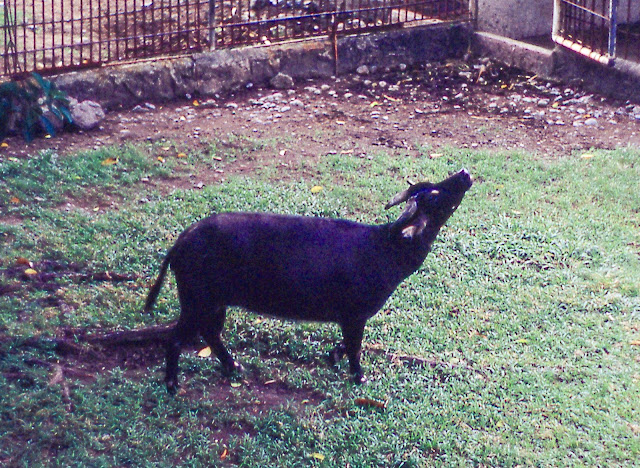Fifty years ago today I walked along Roxas Boulevard from the Manila Hotel to the Zoo. I had arrived along with other Hongkongers on New Year’s Day 1967, a Sunday like this year. The landing on a Garuda DC-8 was interesting in that the water buffalo grazing on the airfield cleared the runway as the plane landed. The short journey from the airport to the Manila Hotel seemed to take forever. It was New Year and a Sunday. The streets were packed with jeepneys, the brightly-painted jeeps then the main form of transport, and their drivers ignored all road signs and normal (to us) rules of the road. Eventually we reached the Manila Hotel where, to my amazement, I found I had been allocated a suite by the organisers of what was my first scientific conference of any kind. I was even more amazed to be told by the hotel staff that the last occupant of the suite had been the President of the U.S.A., Lyndon B. Johnson, in October 1966 when he attended a SEATO Summit*.
When I found the bathroom I checked that it was made of iron. The standard advice to Brits visiting Manila was to take shelter from stray bullets in the bath if the sound of gunfire (from criminal gangs) got close. I did hear gunfire on two nights but it was not sufficiently close for me to take to the bath.
The Zoo was interesting. It had only opened in 1959 and many of the enclosures and cages were, I realised many years later and not surprisingly, very similar to those in U.S. zoos. Some were dismal affairs; others looked very tired. I was shown around by the zoo’s vet, Dr Luis B. Caday**, who was clearly trying to do his best to keep the animals healthy and in suitable conditions. One of the objectives of the zoo was to let local people see their native animals and thus gain an interest in their conservation. The very low price for admission was aimed at attracting even the very poor like those I passed living in shacks along Roxas Boulevard.
I had read previously that the zoo had the only Tamaraw or Tamarao (Bubalus mindorensis) in captivity and was soon shown to the terrace overlooking its paddock. The vet said it was no trouble and did not look or do anything very interesting. Locals passed this incredibly rare animal by—to them it was just a small buffalo.
 |
| Manila Zoo's Tamaraw or Tamarao (Bubalus mindorensis). January 1967 |
The Tamaraw is and was then critically endangered. It occurs only on the island of Mindoro, where it now found only in the central highlands. Fifty years on, its prospects seem no better and possibly worse than they did then, and it is vulnerable to continuing human population pressure on the land and to illegal poaching. There is no backup captive population. A captive-breeding programme set up some years ago failed. The population is thought to be 350-400 individuals in three separate subpopulations.
 |
| Manila Zoo also had Monkey-eating or Philippine Eagle (Pithecophaga jefferyi) also now Critically Endangered because of habitat loss by deforestation |
If you want to start 2017 on a low note and be reminded of the cause of loss of habitat, loss of species and the damage to all life on this planet, I should point out that the human population of the Philippines increased from 32 million in 1967 to over 100 million in 2017. But in 1967 it was fashionable and respectable to warn of the dangers of population growth. Now it is politically incorrect. Because that it is the real problem, perhaps the political phrase of the year should be: ’It’s the population, stupid’.
 |
| The Manila Hotel on the left from outside the US Embassy on Roxas Boulevard. January 1967 |
*I just checked whether LBJ stayed at the Manila Hotel. He did.
**I have found his business card in an old file (Note added 8 March 2017)
**I have found his business card in an old file (Note added 8 March 2017)


No comments:
Post a Comment